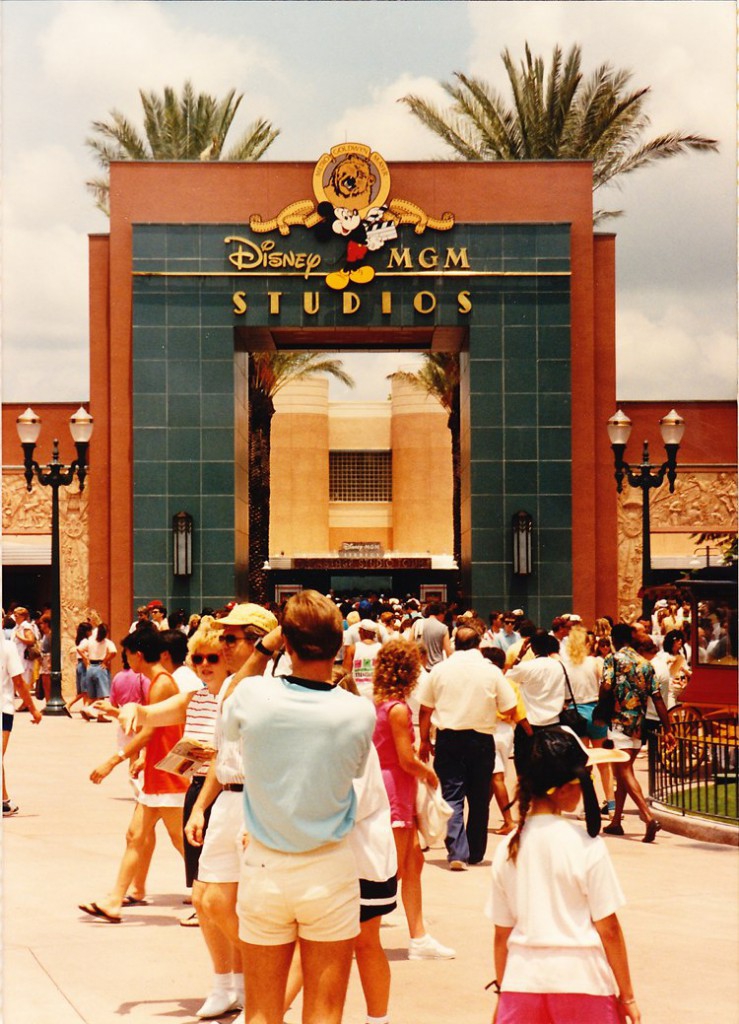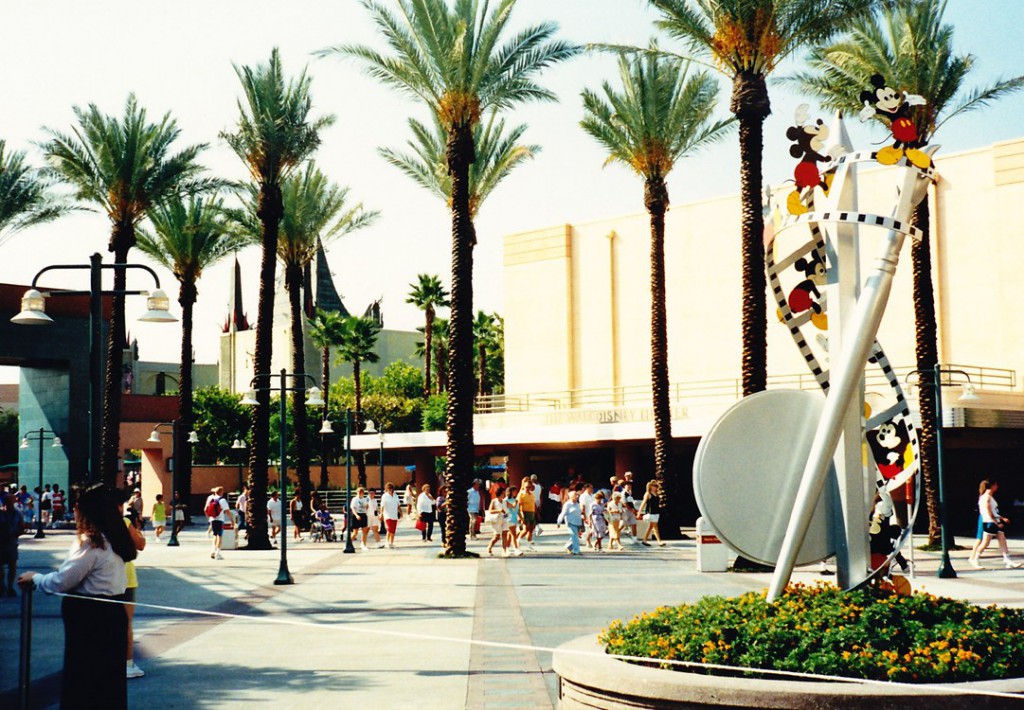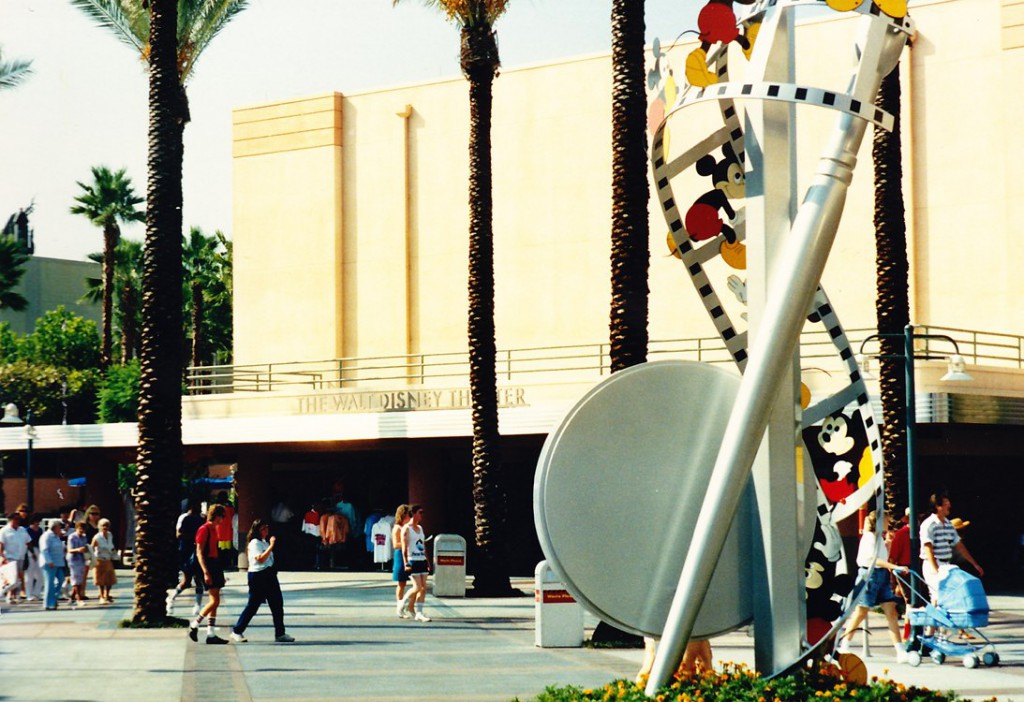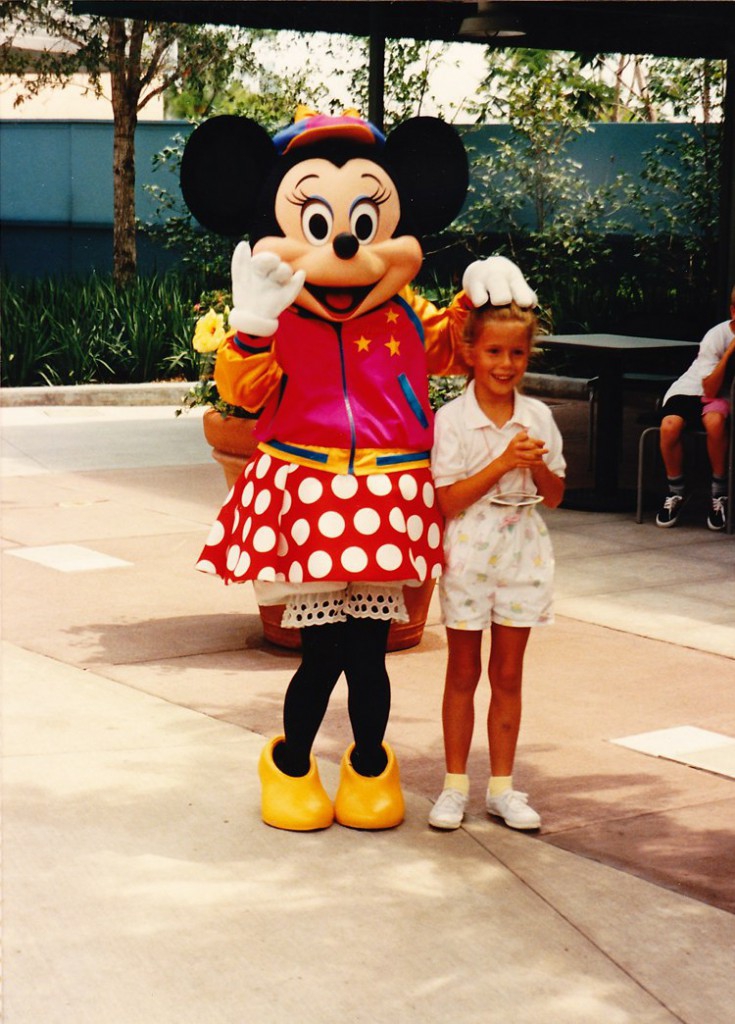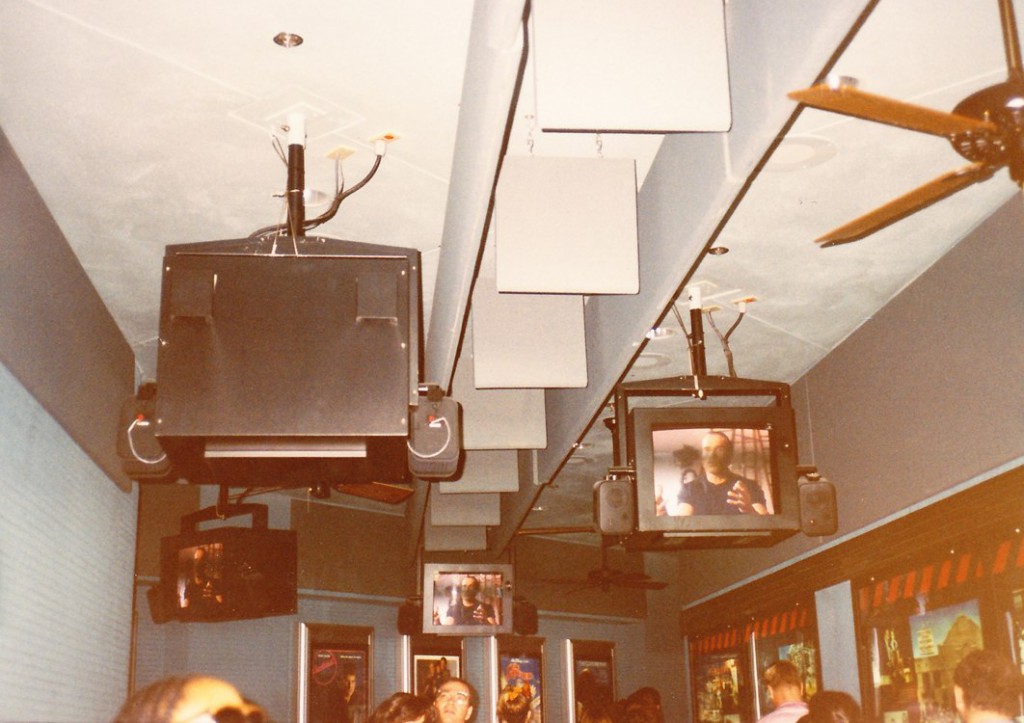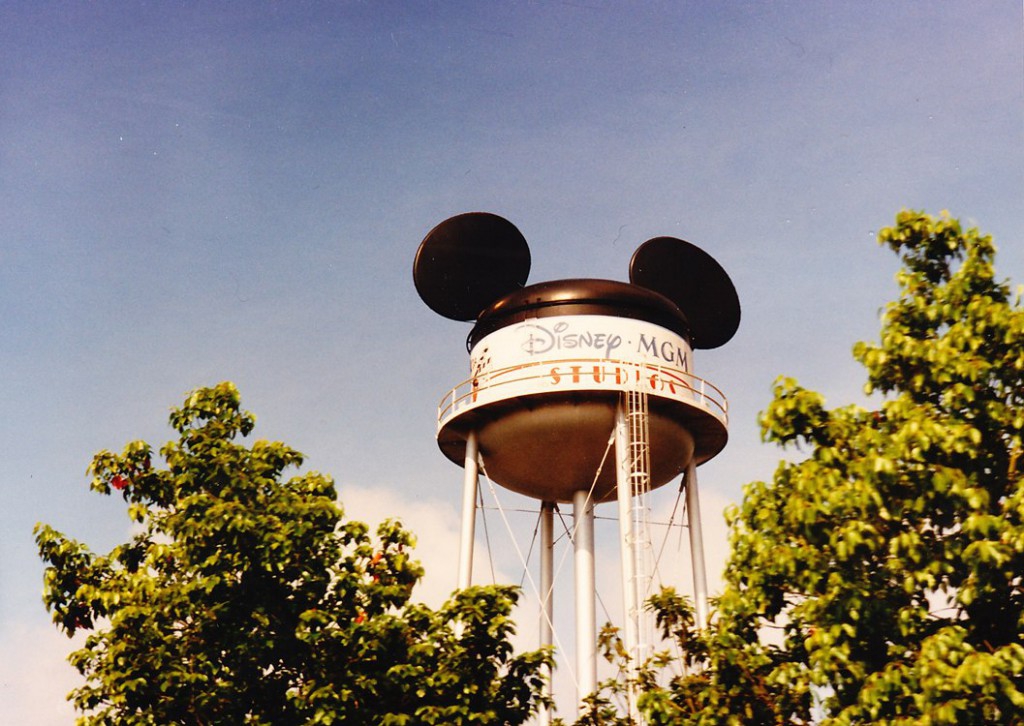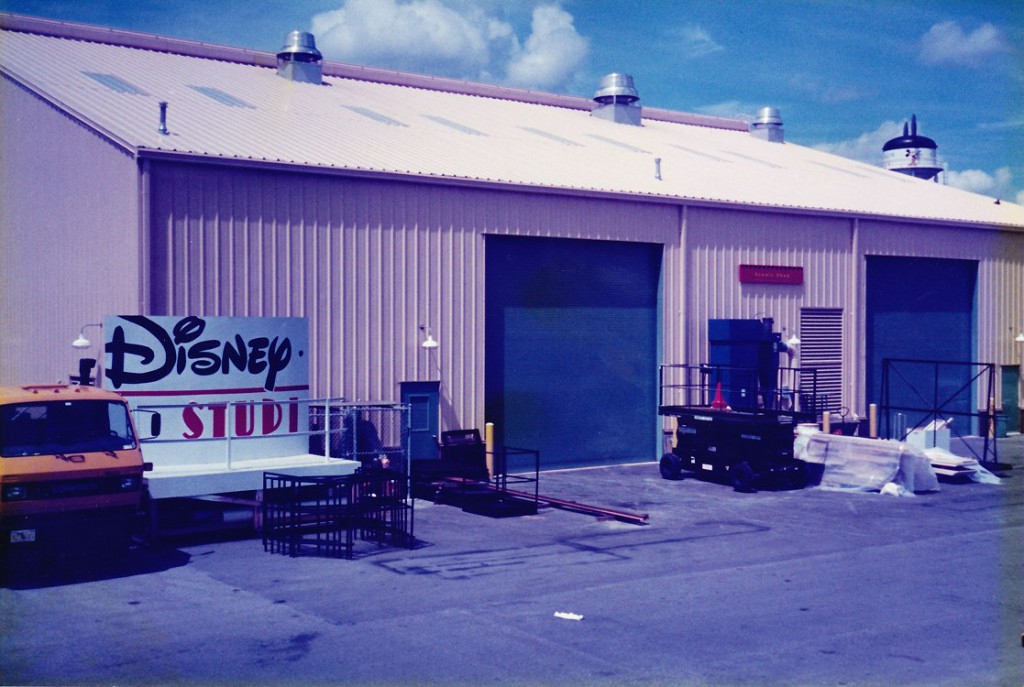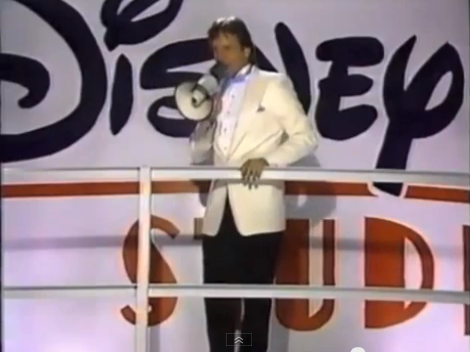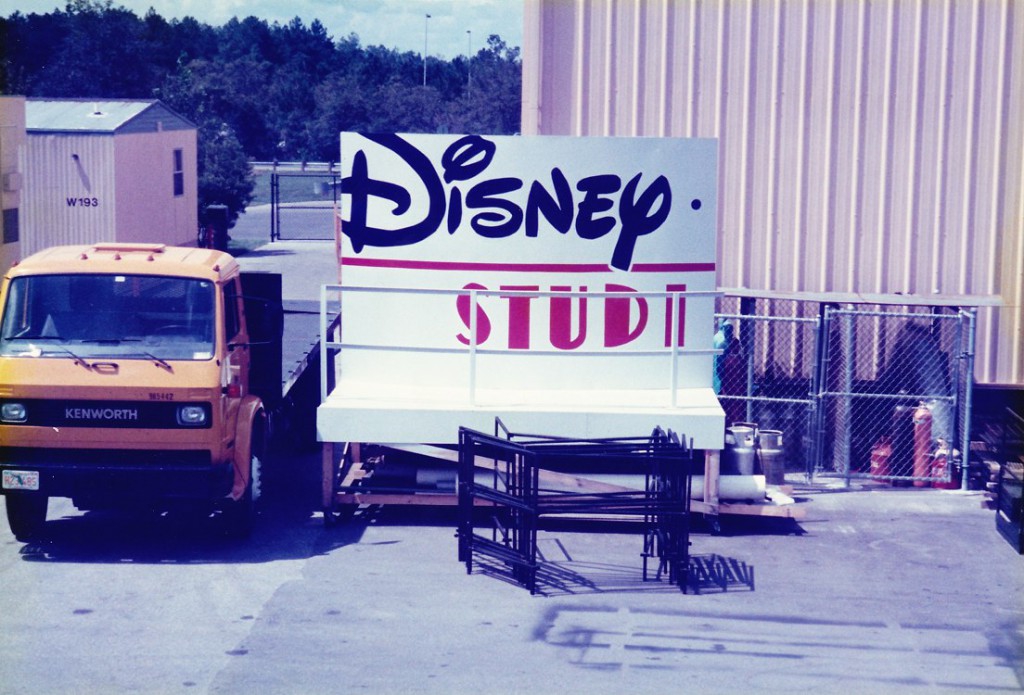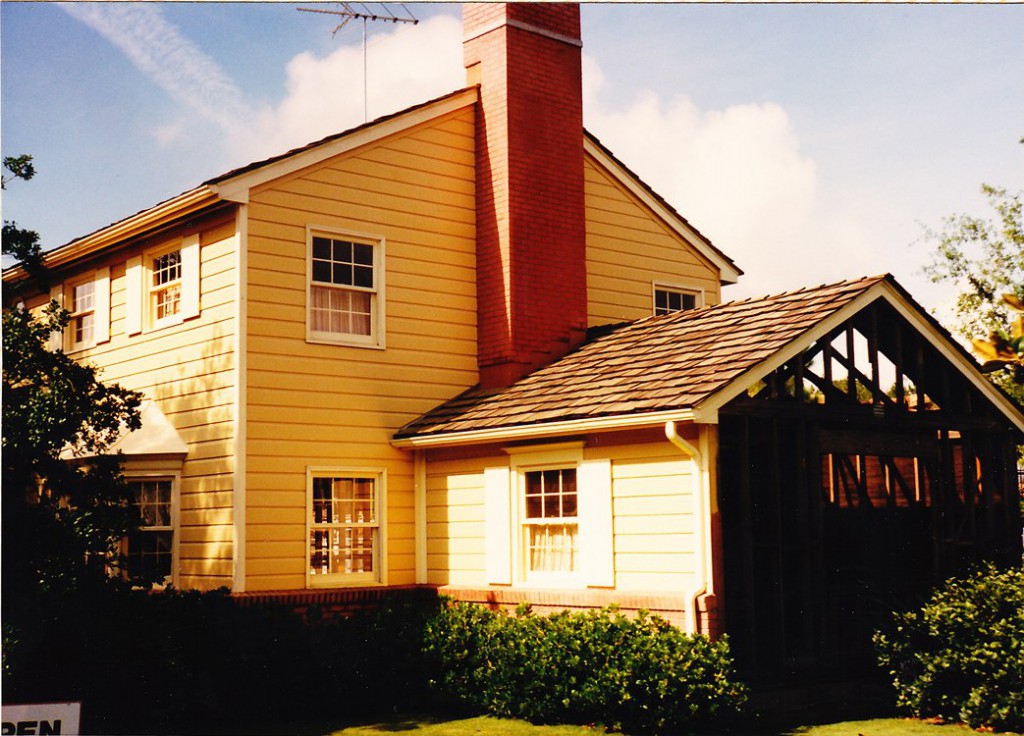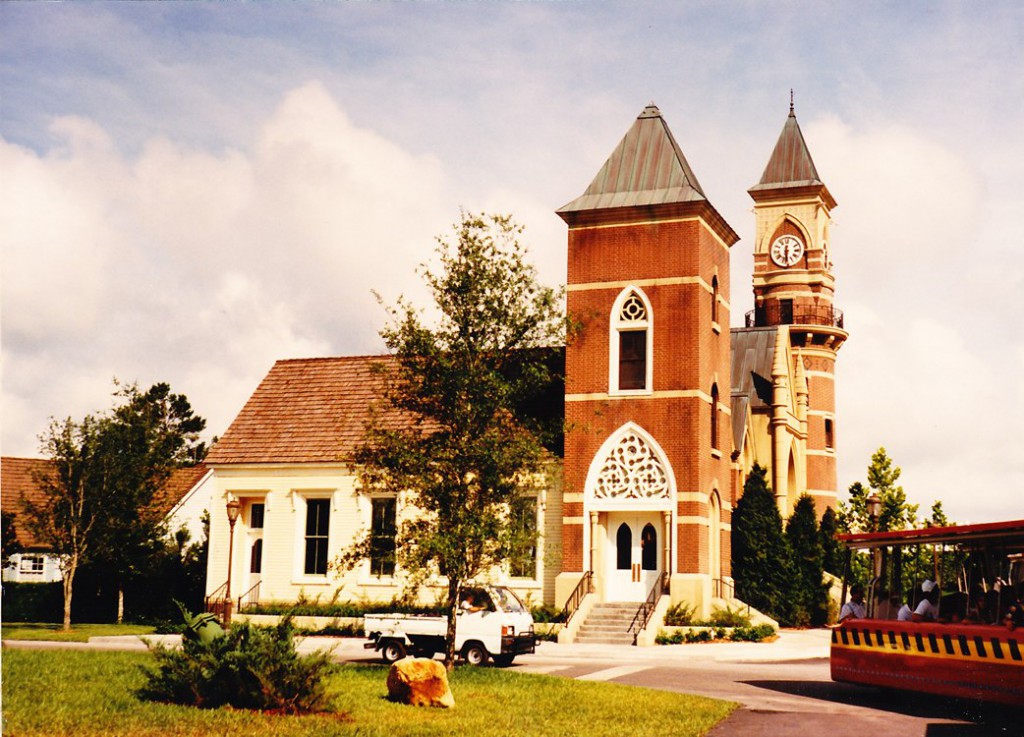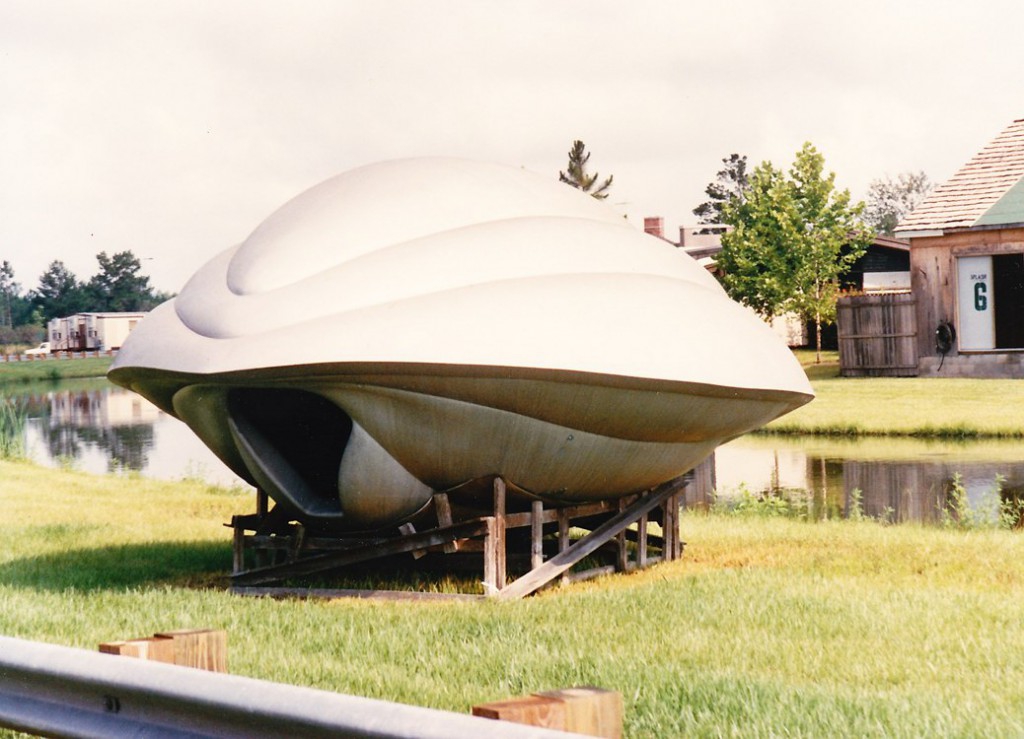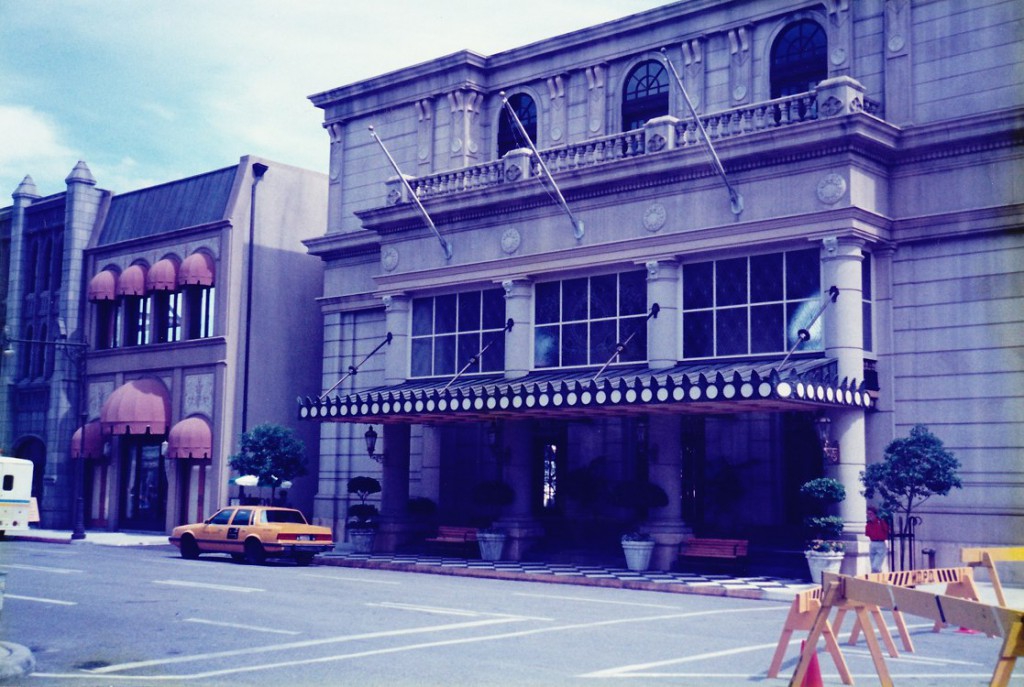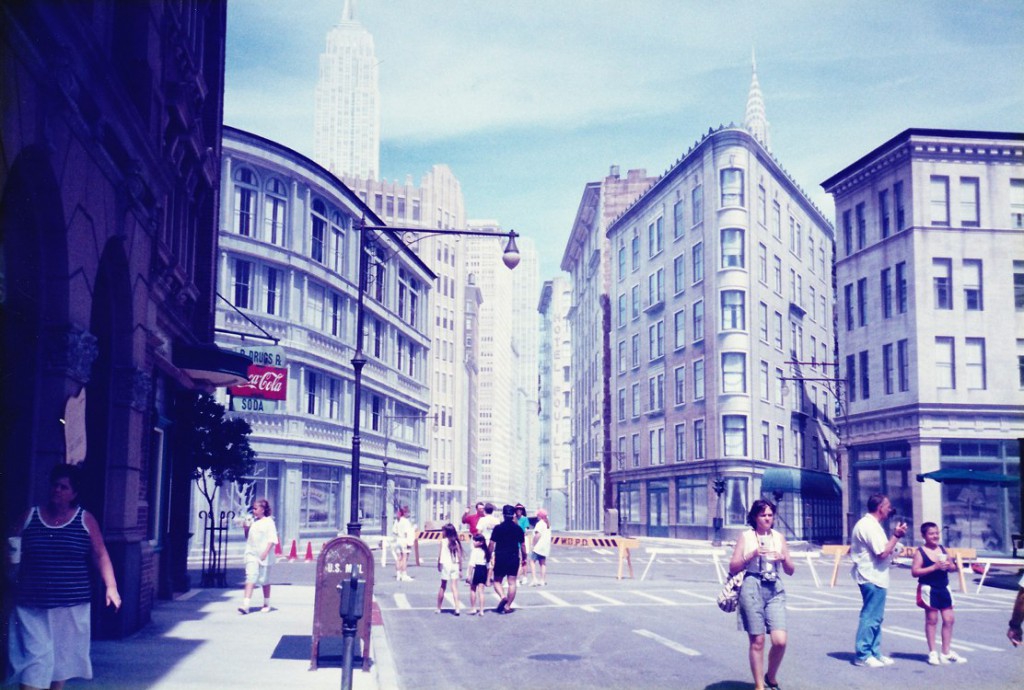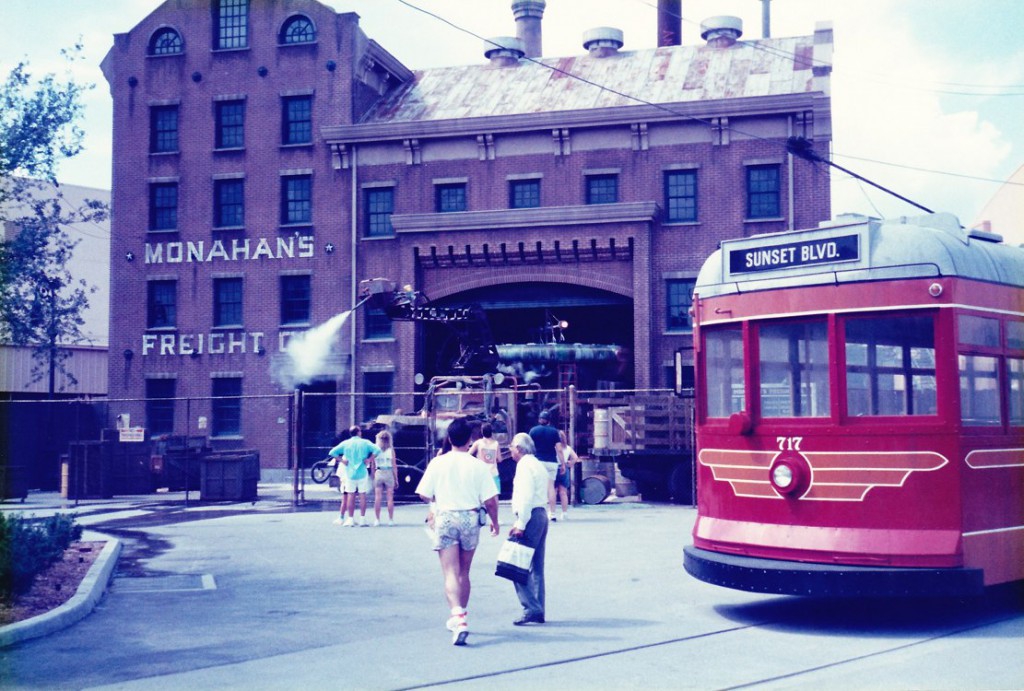Studio Courtyard
An imposing gate to the right of the Chinese Theatre led to the Studio Courtyard. This area served as the “lobby” for the Magic of Disney Animation, the Soundstage Restaurant, and the Backstage Studio Tour. A whimsical, spiraling sculpture marked the entrance to the Animation exhibit. Inside, guests were treated to a complete tour of a working animation studio. Outside, you could meet your favorite “toon” stars during their filming breaks. The Soundstage Restaurant was just as billed—a soundstage that had been converted into a restaurant. On opening day, sets from the Touchstone release “Big Business” had been trucked in and reassembled, allowing diners to enjoy their meal amid the splendors of the lobby of New York’s Plaza Hotel. High up under the grid the Catwalk Bar offered adult libations.
Backstage Studio Tour
The longest line at the Disney-MGM Studios Theme Park could be found here. Guests had been promised more than just a tram ride through standing sets. They were told to expect an in-depth look at every aspect of filmmaking, from the front of the lot, to the back lot, and into post-production. While standing in line, monitors ran continuous videos of celebrities explaining various processes used in making films. After boarding their trams, guests were directed to a clear view of Disney-MGM’s famous “Earfull Tower,” a water tower that actually served only as a marquee.
I must take my readers on an aside here. While riding the trams through the Production Center, there were a number of things to see. One of the most unusual during those opening months was what appeared to be a full-sized section of the Earfull Tower, sitting on the ground outside a warehouse. I puzzled over its possible use, and then realized where I had seen it.
During the two-hour TV special that kicked off the Disney MGM Studios, celebrity John Ritter was seen high above the proceedings, directing activities from the rim of the water tower. The camera would do a slow push to the white-clad figure above, and then they would dissolve to a remarkably clear shot of Ritter, gazing down on the activities below. Behind him one could see the words “Disney/Studi.” And this is exactly what could be seen painted on the discarded set piece along the Studio Tour.
Back on the tour, trams slowly made their way through a residential street, complete with “two-sided” church, and past a number of large scale props and vehicles, including the full-sized space craft from “Flight of the Navigator.” Trams also made their way through the New York Street sets, which were off limits to the public. The “picture perfect” view through Washington Square arch was reserved for riders only. After all, was this not a working studio? Reaching the edge of the lot, trams made their way into another “working set” that proved to be the Catastrophe Canyon special effects extravaganza.
Within weeks it became plain that the crowds were too big for the theme park’s original footprint. By my second visit in August, guests were allowed to explore half of New York Street, with trams still wending their way past brownstones and Washington Square. The “Dipmobile” from “Who Framed Roger Rabbit” had to be confined behind a fence, and guests were able to peer behind the forced-perspective “skyscrapers” at the end of New York Street.

